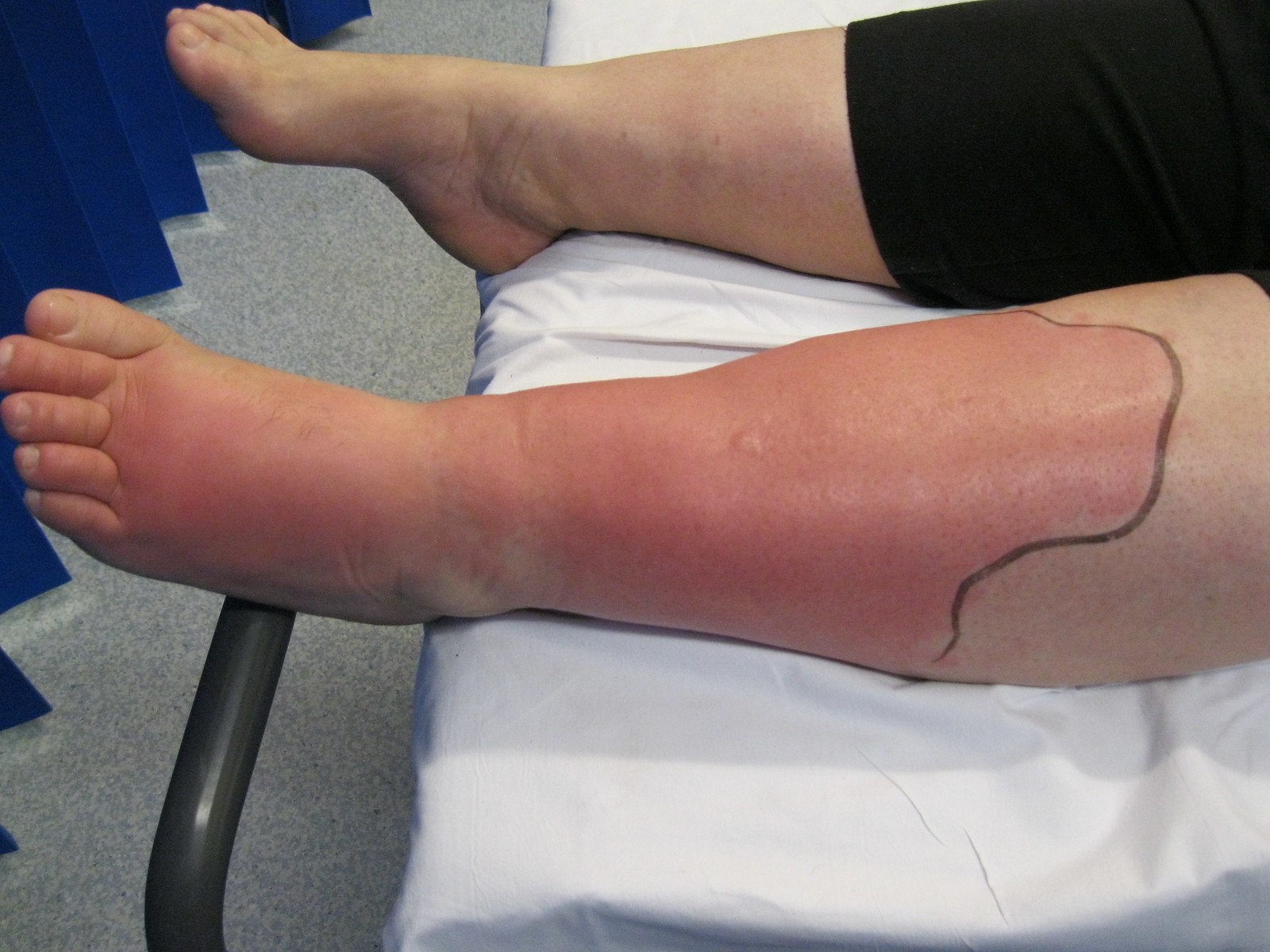What is cellulitis?
Cellulitis is an acute spreading inflammation of the skin and subcutaneous tissues, characterised by pain, heat, swelling and erythema (redness). It is usually accompanied by fever, nausea/vomiting and a feeling of being unwell. People with lymphoedema are particularly susceptible to cellulitis because the lymphatic system is damaged or overloaded and does not function adequately to fight infection.
What causes it?
The infection may enter via a break in the skin, such as a scratch or insect bite or through a pre-existing wound or ulcer, or through an area of skin inflammation, e.g., athlete’s foot, eczema, or dermatitis. However, it may not always be possible to identify the cause and an attack may arise without warning at all.
Symptoms
You often (but not always) feel unwell first, as if flu is starting. Symptoms may include fever, shivers, muscular aches and pains, headache, nausea, vomiting etc. The swollen area then develops a rash or becomes red, hot, and tender to the touch. Swelling may dramatically increase, and pain may occur in the swollen area, or the armpit (with lymphoedema of the arm) or groin (with lymphoedema of the leg).

What should I do if I develop cellulitis?
Contact your doctor immediately as you will need antibiotic treatment. For information on the type of antibiotics used in the treatment of cellulitis in lymphoedema, see the Guidelines on the Management of Cellulitis in Lymphoedema below.
Treatment of cellulitis in lymphoedema is particularly important, not only because you may become ill, but because lymph drainage routes risk being damaged further. This may cause the swelling to worsen and lead to permanent skin changes, e.g. tissue thickening. This will not help the long-term management of the condition.
Points to note:
- Those familiar with attacks and who have appropriate oral antibiotics to hand, should commence them immediately and finish the course completely (even if symptoms improve)
- Remove all compression garments until the area feels better and they can be tolerated again
- Other forms of treatment such as Manual Lymphatic Drainage and exercise programmes should be suspended
- Rest with the affected limb elevated in a comfortable position, ideally raised to the same level as the heart
- Drink plenty of water
- Paracetamol may be taken, however, anti-inflammatory medications such as ibuprofen should be avoided.
Cellulitis can be difficult to diagnose and to distinguish from other causes of inflammation, particularly in the legs. For example, ‘Red Legs.’ ‘Red legs’ can be defined as a redness to both legs, usually below knee only. There can be an associated warmth and tenderness, but individuals do not usually feel unwell. In many cases, symptoms of ‘red legs’ can be due to gravitational eczema, infected dermatitis, athletes’ foot and other chronic conditions which are more skin related and will not respond to antibiotics.

